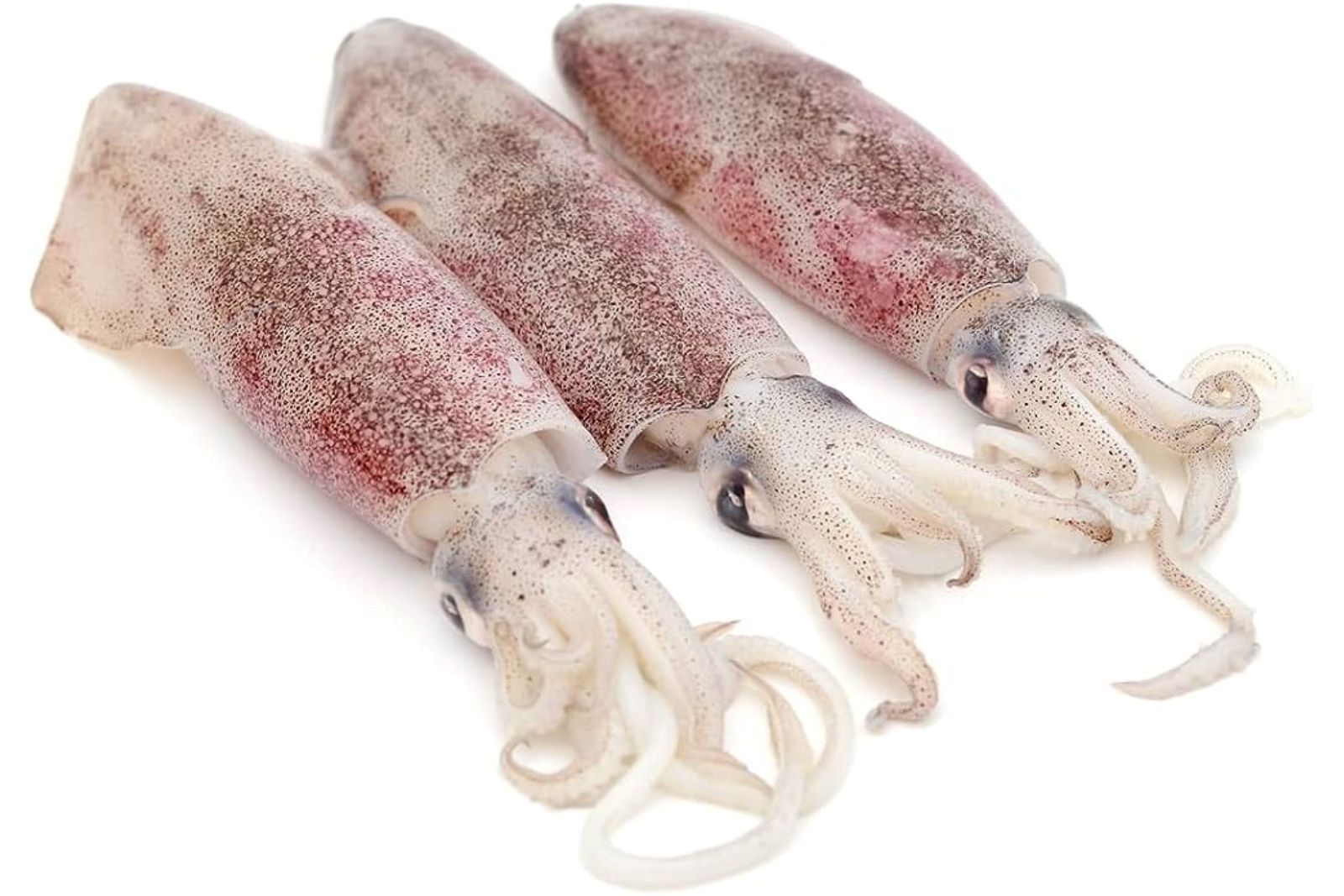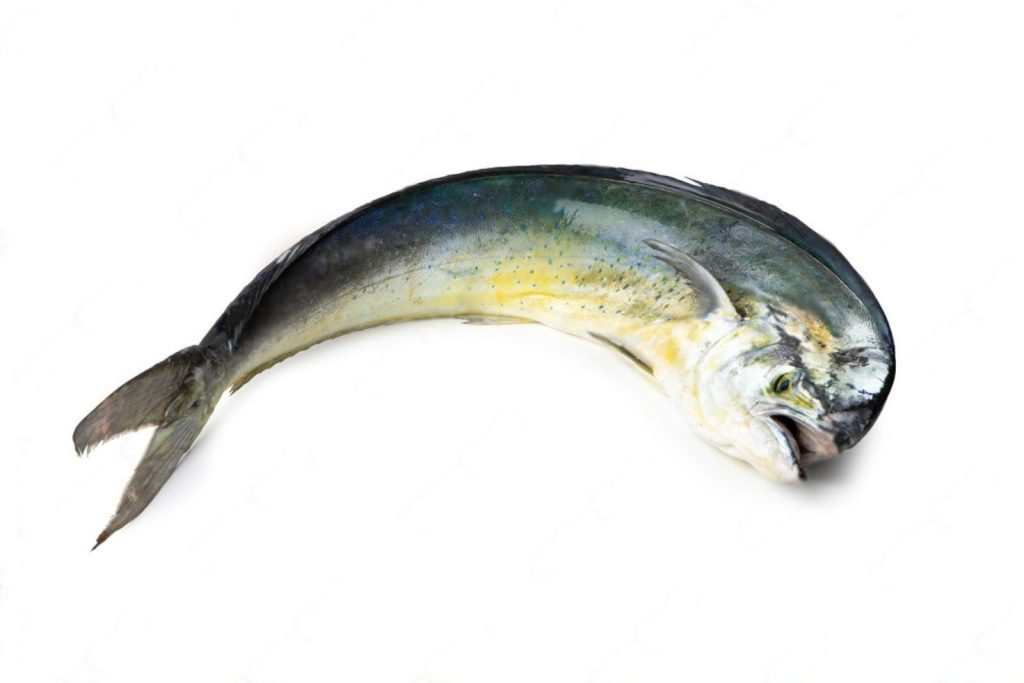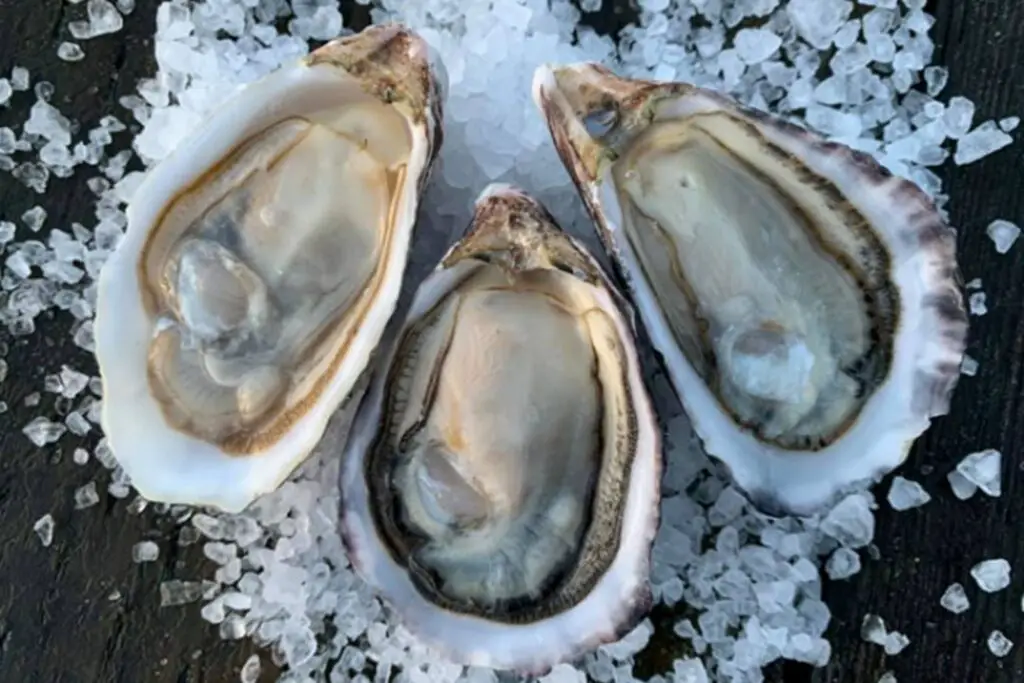
Squids are versatile marine creatures that are widely enjoyed in various cuisines around the world. Freezing squids can help preserve their freshness and extend their shelf life, allowing you to enjoy them at any time. Whether you want to save leftovers or stock up on squids when they are in season, freezing them properly is crucial to maintaining their texture and flavor. In this article, we will provide you with a step-by-step guide on how to freeze squids effectively, ensuring that they retain their quality for future culinary delights.
Here’s a comprehensive guide on freezing squids:
Step 1: Choose fresh squids
To freeze squids successfully, it is crucial to begin with fresh ones. Opting for high-quality squids ensures that they freeze well and retain their flavor and texture when thawed. Here’s why selecting fresh squids is essential:
- Clear eyes: When choosing squids, look for those with clear, shiny eyes. Cloudy or dull eyes can be a sign of aging or poor quality. Clear eyes indicate that the squids are relatively fresh and in good condition.
- Firm flesh: Gently press the squid’s body to check for firmness. Fresh squids should have resilient flesh that springs back when pressed. Avoid squids with soft or mushy textures, as they might be past their prime.
- Pleasant smell: Fresh squids should emit a mild, oceanic scent. Avoid squids with a strong, fishy odor, as it can indicate that they are not fresh. A pleasant smell suggests that the squids are still in their prime and will freeze well.
- Discoloration: Examine the squids for any signs of discoloration. Fresh squids typically have a translucent, whitish appearance. Discoloration, such as dark spots or patches, can be an indication of deterioration and should be avoided.
- Fishy odor: While a mild, briny scent is expected, a strong fishy odor can be a sign of spoilage. Avoid squids with a pungent smell, as they may not freeze well and could affect the taste of your dishes.
Step 2: Clean and prepare the squids
To prepare the squids for freezing, it is essential to clean them thoroughly. Cleaning ensures that any undesirable elements, such as guts, ink sacs, and beaks, are removed. Here’s a step-by-step explanation of the cleaning process:
- Remove guts, ink sacs, and beaks: Start by holding the squid firmly and gently pull the head away from the body. The innards, including the guts and ink sac, will come out attached to the head. Carefully discard these parts. Additionally, locate the beak, which is a hard, mouth-like structure at the base of the tentacles, and remove it by cutting or pulling it out.
- Rinse under cold running water: Thoroughly rinse the squids under cold running water. This helps remove any residual sand, slime, or debris that may be present on the surface or inside the body cavity. Pay attention to cleaning both the exterior and the interior of the squids.
- Pat dry with a paper towel or kitchen towel: After rinsing, gently pat the squids dry using a paper towel or a clean kitchen towel. Drying the squids helps remove excess moisture, which can lead to ice crystals during the freezing process. By removing the moisture, you promote better freezing and prevent freezer burn.
Can I freeze squids with the skin on?
Yes, you can freeze squids with the skin on. The skin helps protect the squids during freezing and can be removed before or after thawing, depending on your recipe. If you prefer to remove the skin before freezing, ensure that the squids are properly cleaned and free of any residue.
Step 3: Decide on the squid’s presentation
When freezing squids, you have the flexibility to choose the presentation that best suits your culinary needs and preferences. Whether you prefer whole squids, sliced squids, or squid rings, each presentation offers different advantages and is suitable for various dishes. Here’s an explanation of the different options:
- Whole squids: Freezing squids in their whole form is ideal if you plan to use them for stuffing or as the main ingredient in a dish. Whole squids are commonly used in recipes where the body cavity can be filled with stuffing, such as calamari stuffing with breadcrumbs, herbs, and spices. Freezing squids whole also preserves their shape, making them visually appealing when cooked.
- Sliced squids: Slicing squids before freezing provides convenience and versatility. Sliced squids are great for stir-fries, sautés, or any dish where you prefer bite-sized pieces of squid. Slicing squids into thin rings or strips allows for even cooking and ensures that they thaw quickly when you’re ready to use them. This presentation is particularly suitable for dishes like Asian stir-fries or pasta recipes that call for tender, cooked squid.
- Squid rings: Freezing squids as rings is a popular option, especially when you plan to make calamari dishes or deep-fried squid. Squid rings are often coated in batter or breadcrumbs and fried until crispy. This presentation offers a convenient way to have pre-cut squid rings on hand, saving you time during meal preparation. Squid rings can be used in a variety of recipes, including classic fried calamari, seafood salads, or even as a pizza topping.
Step 4: Pack the squids for freezing
Proper packaging is essential when freezing squids to maintain their quality and prevent them from sticking together. By following these steps, you can ensure that the squids remain fresh and free from freezer burn:
- Choose suitable freezer bags: Select airtight freezer bags or vacuum-sealed bags specifically designed for freezer storage. These bags provide an effective barrier against air and moisture, preserving the quality of the squids during freezing.
- Portion the squids: Divide the cleaned and prepared squids into appropriate portions based on your anticipated usage. This allows you to thaw only the amount you need without having to defrost the entire package.
- Place in a single layer: Arrange the squids in a single layer within the freezer bags to prevent them from clumping together. This initial arrangement ensures that the squids freeze quickly and individually.
- Remove excess air: Before sealing the bags, squeeze out as much air as possible. Excess air can lead to freezer burn, affecting the texture and flavor of the squids. Removing the air helps maintain the optimal freezing conditions.
- Seal the bags tightly: Ensure that the bags are tightly sealed to prevent any air or moisture from entering. If using zipper-style bags, press out as much air as possible and securely close the zipper. If using vacuum-sealed bags, follow the manufacturer’s instructions for proper sealing.
Step 5: Label the packages
Labeling the packages is an important step in freezing squids as it allows you to keep track of their freshness and easily identify the squid presentation when you need them for future recipes. Here’s why labeling is crucial:
- Date of freezing: Write the date of freezing on each package. This information helps you keep track of how long the squids have been frozen. It’s important to use the oldest squids first to ensure you consume them before any potential loss of quality.
- Description of squid presentation: Include a brief description of the squid presentation on the label, such as “whole,” “sliced,” or “ringed.” This description helps you quickly identify the form in which the squids are frozen, making it easier when selecting squids for specific recipes. For example, if you’re planning to make stuffed squids, you can easily locate the packages labeled as “whole.”
- Organization and convenience: Labeling the packages creates an organized freezer inventory. It enables you to locate and retrieve the desired squid presentation effortlessly, saving time and ensuring you use the squids as intended.
- Quality control: By labeling the packages, you can monitor the squids’ storage time and overall quality. If you notice that some squids have been stored for an extended period, you can prioritize using them or consider consuming them before their quality declines.
Step 6: Place in the freezer
After packaging and labeling the squids, it’s time to place them in the freezer for proper storage. Follow these steps to ensure optimal freezing conditions:
- Arrange in a single layer: Initially, place the packages of squids in a single layer in the freezer. This allows for efficient and quick freezing of the individual squids. By arranging them in a single layer, the cold air in the freezer can circulate around each package, ensuring even freezing.
- Freezing process: It is essential to freeze the squids as quickly as possible. Rapid freezing helps preserve the squids’ texture, flavor, and nutritional value. By placing them in a single layer initially, the squids freeze faster, minimizing the formation of large ice crystals that can affect their quality.
- Frozen solid: Leave the squids in the freezer until they are completely frozen solid. The freezing time may vary depending on the size and thickness of the squids. It is generally recommended to freeze squids for several hours or overnight to ensure they are fully frozen.
- Stack for space-saving: Once the squids are frozen solid, you can stack the packages to save space in the freezer. Make sure the packages are stable and securely stacked to prevent them from toppling over. Consider placing a layer of parchment paper or freezer-safe dividers between the packages to prevent sticking.
Step 7: Maintain proper storage conditions
To ensure the long-term quality and safety of the frozen squids, it is crucial to store them under proper conditions. Follow these guidelines to maintain optimal storage conditions:
- Constant temperature: Store the frozen squids at a constant temperature of 0°F (-18°C) or below. This temperature is ideal for keeping the squids safe to eat and preserving their quality. It helps prevent bacterial growth and enzymatic activity that can lead to spoilage.
- Freezer temperature control: Regularly check the temperature of your freezer to ensure it remains consistently cold. Fluctuations in temperature can impact the quality of the frozen squids. Use a refrigerator thermometer to monitor the freezer temperature and make any necessary adjustments to maintain the desired temperature.
- Avoid temperature fluctuations: Avoid frequently opening the freezer door, as it can cause temperature fluctuations and compromise the quality of the frozen squids. Plan ahead and retrieve only the desired amount of squids needed for your recipes to minimize unnecessary exposure to warm air.
- Proper freezer organization: Arrange the frozen squids in a way that allows for easy access and rotation. Keep them separate from strong-smelling foods to prevent any flavor transfer. Consider grouping them by date of freezing for convenient use of older squids first.
- Packaging integrity: Check the packaging of the squids periodically to ensure it remains intact and airtight. If you notice any damage or signs of freezer burn, consider repackaging the squids to maintain their quality.
How long can squids last in the freezer?
Squids can last in the freezer for up to 3-4 months without significant loss of quality. However, for the best taste and texture, it is recommended to consume them within 1-2 months. Properly packaged and stored squids can remain safe to eat for a longer duration, but their quality may gradually deteriorate over time.
Step 8: Thaw and use frozen squids
When it’s time to use the frozen squids, proper thawing is essential to maintain their texture and ensure food safety. Follow these steps to thaw the squids effectively:
- Refrigerator thawing: Thaw the frozen squids in the refrigerator. Place the desired amount of frozen squids in a leak-proof container or on a plate, and cover them loosely with plastic wrap or a lid. Allow them to thaw gradually in the refrigerator overnight or for approximately 24 hours. This slow thawing process helps preserve the squids’ texture and minimizes moisture loss.
- Avoid room temperature thawing: Avoid thawing the squids at room temperature or using hot water to speed up the process. Thawing at room temperature can promote bacterial growth and compromise food safety. Hot water thawing can lead to uneven thawing and may affect the squids’ texture and flavor.
- Use thawed squids promptly: Once the squids are fully thawed, it’s important to use them promptly. Refrigerated squids should be consumed within one to two days for optimal quality and freshness.
- Avoid refreezing thawed squids: It is not recommended to refreeze squids that have been thawed. Thawing and refreezing can degrade the quality and texture of the squids, resulting in a less enjoyable culinary experience.
Other related questions
How do I know if the squids have gone bad after being frozen?
To determine if frozen squids have gone bad, look for signs such as an off-putting odor, discoloration, or a slimy texture. If the squids have developed freezer burn, indicated by dry, discolored patches, their quality may be compromised. Additionally, if there are any visible signs of mold or if the squids have an unpleasant or rancid smell, it is best to discard them, as they are likely no longer safe for consumption.
Can I freeze cooked squid dishes such as calamari?
Yes, you can freeze cooked squid dishes such as calamari. Allow the cooked dish to cool completely before portioning it into airtight freezer containers or bags. Label the containers with the date and contents, and store them in the freezer. Thaw and reheat the dish thoroughly before serving.
Can I freeze stuffed squids?
Yes, you can freeze stuffed squids. Prepare the stuffed squids according to your preferred recipe, then pack them tightly and securely in airtight freezer bags or containers. Ensure that the stuffing is completely cooled before freezing. Thaw and cook the stuffed squids thoroughly before serving.
Can I freeze squids in marinade?
Yes, you can freeze squids in marinade for added flavor. Place the cleaned squids in a freezer bag or container, add the marinade, and seal it tightly. Ensure that the squids are completely coated with the marinade before freezing. Thaw and cook the squids according to your recipe.
Are frozen squids suitable for raw consumption, such as in sushi or sashimi?
Frozen squids can be suitable for raw consumption, but it is crucial to use high-quality, sushi-grade squids and ensure they have been properly handled and frozen at very low temperatures. It is recommended to consult a reputable fishmonger or follow expert guidelines for using frozen squids in raw preparations.
Can I freeze cleaned squid tubes separately from the tentacles?
Yes, you can freeze cleaned squid tubes separately from the tentacles. Place the cleaned squid tubes in one container or bag and the tentacles in another, ensuring both are properly sealed. This allows for easier portioning and use when preparing different recipes.








